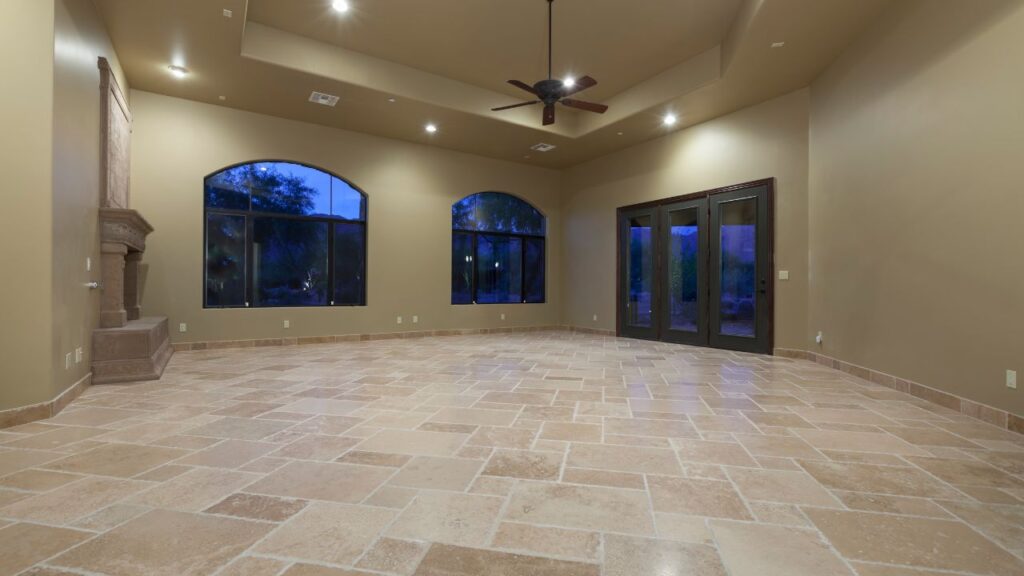Bid Confidently, Bid Successfully – Try Our Flooring Cost Estimates!
- Accurancy
- Efficiency
- Transparency
- Customization
- Time Saving
- Professionalism
- Cost Control

Flooring is a crucial element in any townhouse, serving as the foundation for both functionality and aesthetic appeal. Whether you’re planning to install new flooring, upgrade existing surfaces, or address specific needs, having a clear understanding of potential costs is essential for effective planning and budgeting.
In this comprehensive guide, we’ll explore the factors that influence townhouse flooring costs and provide a detailed estimator to assist you in making informed decisions.

The cost of flooring in a townhouse can vary widely depending on factors such as materials, installation complexity, and project scope. On average, anticipate budgeting between $7,000 and $25,000 or more for flooring services depending on details and complexity of job. This estimate covers a spectrum of flooring options, including hardwood, laminate, tile, carpet, and luxury vinyl.
The selection of flooring material plays a pivotal role in determining overall project costs. Opting for high-quality materials such as hardwood or natural stone comes with a premium price tag, reflecting their durability and timeless appeal. Alternatively, budget-friendly options like laminate and carpet provide cost-effective alternatives. When deciding on flooring materials, it’s essential to weigh factors such as longevity, maintenance requirements, and how well the chosen material aligns with your aesthetic preferences and lifestyle.
The intricacy of the installation process significantly influences overall expenses. Choosing intricate patterns, unique layouts, or specialized installations, such as herringbone or diagonal arrangements, can lead to higher labor costs. Conversely, straightforward installations tend to be more cost-effective. The complexity of the installation should align with your design vision and budget, as intricate patterns may enhance visual appeal but come with added installation expenditures.
The size of the rooms and the overall scope of the flooring project are pivotal factors impacting costs. Larger areas necessitate more materials and increased labor, contributing to higher overall expenses. Whether you’re renovating a single room or the entire townhouse, understanding the project scope is essential for accurate cost estimation. A comprehensive evaluation of the project’s scale ensures that you allocate budgetary resources appropriately.
The condition of the subfloor and any necessary preparations significantly affect project costs. If the existing subfloor requires repairs or leveling, additional expenses may accrue. Adequate subfloor preparation is crucial to creating a stable foundation for the new flooring, ensuring not only a successful installation but also its long-lasting performance.
Opting for intricate designs, patterns, or custom inlays adds a layer of personalization to your flooring but can also lead to increased costs. These features contribute to a unique aesthetic, but their incorporation may require additional labor and expertise.
The decision to invest in intricate designs should be a balance between the desired visual impact and the budget constraints of the project.

The underlayment, providing support and insulation, plays a crucial role in the overall cost equation. While higher-quality underlayment materials come with a higher price tag, they contribute to enhanced comfort, noise reduction, and overall flooring performance. Choosing the appropriate underlayment quality aligns with the desired level of comfort and performance for your living spaces.
The ease of access to flooring areas directly influences labor costs. Rooms that are easily reachable may result in more straightforward installations, leading to lower labor expenses. Conversely, hard-to-reach or intricate spaces may demand additional time and effort from the installation team, contributing to higher overall labor costs. Assessing accessibility is vital for setting realistic budget expectations.

Incorporating extra features such as baseboards, transitions, or intricate finishes can impact project costs. While these finishing touches enhance the overall aesthetic, they may require skilled craftsmanship and contribute to the overall project expense. Homeowners should carefully consider the value these additional features bring to the overall design and weigh them against budget constraints.
In conclusion, estimating costs for townhouse flooring involves careful consideration of various factors, including the type of flooring material, installation complexity, room size, subfloor condition, design choices, underlayment quality, accessibility, and additional features. Balancing these elements ensures a comprehensive understanding of potential expenses for achieving a functional, visually appealing, and durable flooring solution in your townhouse. With this detailed guide, homeowners can make informed decisions to create the perfect foundation for their living spaces.
Please note that these cost estimates are general averages, and actual expenses may vary based on location, specific project requirements, and market conditions.
The cost of flooring in a townhouse can vary, but on average, homeowners can anticipate budgeting between $7,000 and $25,000 or more. Actual costs depend on factors like materials, installation complexity, and the overall scope of the project.
The choice of flooring material is a significant cost factor. High-quality materials such as hardwood or natural stone come with a premium price, while more budget-friendly options like laminate or carpet offer cost-effective alternatives. Factors to consider include durability, maintenance requirements, and aesthetic preferences.
The intricacy of the installation process influences overall expenses. Choosing intricate patterns, unique layouts, or specialized installations, like herringbone or diagonal arrangements, may result in higher labor costs. Simpler installations are generally more cost-effective.
The size of rooms and the overall scope of the flooring project directly affect costs. Larger areas require more materials and increased labor, contributing to higher expenses. Understanding the project’s scale, whether it’s a single room or an entire townhouse, is crucial for accurate cost estimation.
The condition of the subfloor and any necessary preparations significantly affect project costs. If the existing subfloor needs repairs or leveling, additional expenses may accrue. Adequate subfloor preparation ensures a stable foundation for the new flooring, ensuring successful installation and long-lasting performance.
Incorporating extra features like baseboards, transitions, or intricate finishes can impact project costs. While these finishing touches enhance the overall aesthetic, they may require skilled craftsmanship and contribute to the overall expense. Homeowners should carefully weigh the value these additions bring to the design against budget constraints.
Here I am going to share some steps to get your Townhouse Flooring Cost estimate report.
You can send us your plan on info@estimatorflorida.com
Before starting your project, we send you a quote for your service. That quote will have detailed information about your project. Here you will get information about the size, difficulty, complexity and bid date when determining pricing.
Our team will takeoff and estimate your project. When we deliver you’ll receive a PDF and an Excel file of your estimate. We can also offer construction lead generation services for the jobs you’d like to pursue further.



561-530-2845
info@estimatorflorida.com
Address
5245 Wiles Rd Apt 3-102 St. Pete Beach, FL 33073 United States
561-530-2845
info@estimatorflorida.com
Address
5245 Wiles Rd Apt 3-102 St. Pete Beach, FL 33073 United States
All copyright © Reserved | Designed By V Marketing Media | Disclaimer